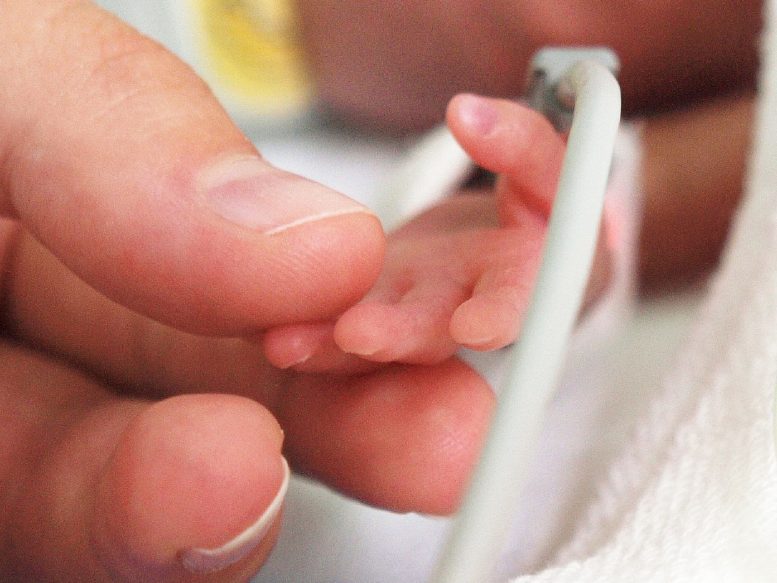
A recent study suggests that regular contact with chemicals found in plastic food packaging and numerous cosmetic products could be linked to approximately 56,600 premature births in the United States during 2018. According to the study’s authors, the medical expenses associated with these preterm births are projected to be at least $1.6 billion, potentially rising to $8.1 billion throughout the lives of these children.
For decades, the chemicals, called phthalates, have been shown to interfere with the function of certain hormones, or signaling compounds that circulate in the blood and guide much of the body’s processes. Exposure to these toxins, which is believed to occur as consumer products break down and are ingested, has been linked to obesity, cancer, and fertility issues, among many other health concerns.
Led by researchers at NYU Grossman School of Medicine, the new analysis of phthalate exposure in more than 5,000 American mothers has specifically linked it to increased risk of lower weight and gestational age (the period of time between conception and birth) among newborns. These risk factors, the authors say, are known to at least modestly heighten risk for infant death, interfere with academic performance, and may potentially contribute to heart disease and diabetes. According to their results, roughly 10% of all preterm births that occurred in 2018 could be linked to the chemicals.
Financial and Medical Implications
“Our findings uncover the tremendous medical and financial burden of preterm births we believe are connected to phthalates, adding to the vast body of evidence that these chemicals present a serious danger to human health,” said study lead author Leonardo Trasande, MD, MPP. “There is a clear opportunity here to lessen these risks by either using safer plastic materials or by reducing the use of plastic altogether whenever possible,” added Trasande, the Jim G. Hendrick, MD, Professor in the Department of Pediatrics at NYU Langone Health.
The study, recently published in the journal The Lancet Planetary Health, is believed to be the largest of its kind to date and includes information from a much more racially and ethnically diverse group of women than previous studies on the topic, says Trasande.
Study Methodology and Findings
For the research, the team analyzed data from the Environmental Influences on Childhood Health Outcomes (ECHO) program, an initiative by the National Institutes of Health to better understand the effects of a wide range of environmental, social, and economic factors on children’s health. The information, which ranged from access to food and the impact of racism and income inequality to toxin exposures, allowed researchers to account for and separate out demographic factors besides phthalates that could influence preterm birth, says Trasande.
To assess prenatal phthalate exposure, the researchers measured levels of 20 different metabolites (the components into which the chemicals break down within the body) in urine samples collected at three points during each subject’s pregnancy. Then, the team looked for associations between these metabolite levels and preterm births. Next, they estimated the resulting monetary costs from intensive-care-unit stays and other related medical bills, and lost worker productivity over a lifetime from lowered IQ points.
Besides examining overall exposure to the toxins, the authors also searched for distinctions between specific phthalates. In particular, they compared di-2-ethylhexyl phthalate (DEHP), a chemical long used to make plastic more flexible, with several newer replacements for DEHP, which has faced heightened scrutiny in recent years.
According to the findings, when grouping mothers based on the amount of DEHP metabolites in their urine, the 10% with the highest levels had a 50% increased risk of giving birth before week 37 of their pregnancy compared with the 10% with the lowest levels. Meanwhile, the risk for preterm birth was doubled for women exposed to the highest quantities of three common DEHP alternatives, di-isodecyl phthalate (DIDP), di-n-octyl phthalate (DnOP), and diisononyl phthalate (DiNP), compared with those who had little to no exposure.
Conclusions and Future Directions
“These results demonstrate the need to regulate phthalates as a class rather than trying to address them one at a time,” said Trasande, a professor in the Department of Population Health at NYU Langone. “Otherwise, investigators are likely going to find the same study results in another few years about the next group of chemicals used as replacements.”
According to Trasande, who is also the director of NYU Langone’s Division of Environmental Pediatrics, the authors next plan to expand their analysis to exposures in other countries and to examine the health effects of preventing phthalate exposure in the first place. California, among a few states, has banned some use of phthalates in consumer products, as have European Union member states.
Trasande cautions that further research is needed to better understand the specific mechanisms behind the link between phthalate exposure and preterm birth.
Reference: “Prenatal phthalate exposure and adverse birth outcomes in the USA: a prospective analysis of births and estimates of attributable burden and costs” by Leonardo Trasande, Morgan E Nelson, Akram Alshawabkeh, Emily S Barrett, Jessie P Buckley, Dana Dabelea, Anne L Dunlop, Julie B Herbstman, John D Meeker, Mrudula Naidu, Craig Newschaffer, Amy M Padula, Megan E Romano, Douglas M Ruden, Sheela Sathyanarayana, Susan L Schantz, Anne P Starling, Ghassan B Hamra, PB Smith, KL Newby, LP Jacobson, DJ Catellier, R Gershon, D Cella, J Cordero, F Tylavsky, A Mason, Q Zhao, N Bush, KZ LeWinn, K Lyall, H Volk, R Schmidt, JM Kerver, C Barone, C Fussman, N Paneth, M Elliott, R Nguyen, S Swan and C Karr, February 2024, The Lancet Planetary Health.
DOI: 10.1016/S2542-5196(23)00270-X
The study was funded by the National Institutes of Health.